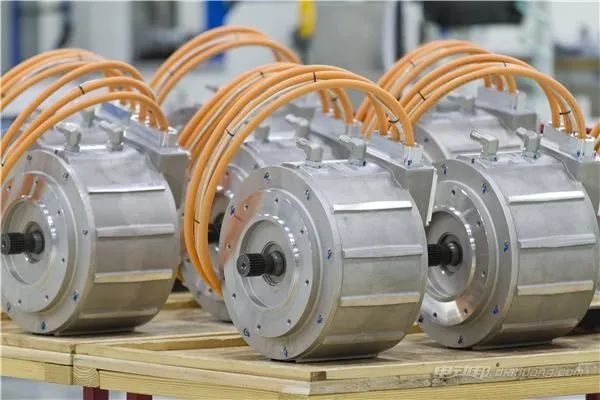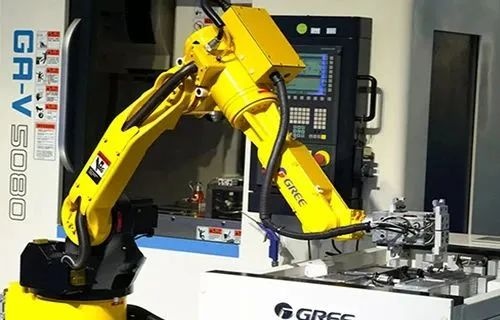Tesla's development of next-generation motors exploded in A-shares

Many companies have revealed that they have "technical reserves"
According to the data, the synchronous reluctance motor works by using the torque generated by the uneven reluctance of the rotor. The rotor is composed of ferromagnetic materials and non-ferromagnetic materials. It has no permanent magnets and no windings. It is one of the motors with the simplest structure. First, it has the advantages of simple structure, strong and durable, high efficiency, wide range of speed regulation, and low cost.
In August 2022, the Ministry of Industry and Information Technology and other five departments issued the "Notice on Accelerating the Green and Low-Carbon Innovation and Development of Electric Power Equipment", which listed synchronous reluctance motors, high power density permanent magnet motors, smart motors, and ultra-efficient asynchronous motors together. Encouraged research and development varieties.
The drive motor is the most expensive electric vehicle accessory module besides the battery module. After Tesla proposed that future motors will not use rare earths, the market began to dig out A-share companies related to synchronous reluctance motors. Some companies also choose to disclose their connection with them on the interactive platform.

Vosges stated on the investor interaction platform that the company's main business is the production and sales of high-efficiency motors. It has successfully developed IE5 ultra-efficient synchronous reluctance motors and has begun to promote them to the marine motor market.
Kehui shares stated in the interactive platform that the synchronous reluctance motor drive system developed and produced by the company has been transformed and replaced in various scenarios such as fan drive and water pump drive, and the energy saving effect is remarkable.

And companies including Veichuang Electric and New Star have disclosed the progress of related research and development applications.
The market performance of related sectors has shown a trend of rising and falling in recent days. Kehui shares closed up 13.01% on March 2, and the largest increase once exceeded 15%. Vosges shares rose as much as 6.6 percent at one point. But both stocks fell below their March 1 closing price as of March 7.
"Early Bird" Gree Electric Appliances
Although there are quite a few A-share companies involved in reluctance motors, so far no company has made it clear that their synchronous reluctance motors have been used in new energy vehicles.
However, the reporter also found that the relatively low-key Gree Electric was the first A-share company to develop synchronous reluctance motors and apply them to passenger cars.
According to public information, Zhuhai Kaibang Motor Manufacturing Co., Ltd. (hereinafter referred to as "Kaibang Motor"), a wholly-owned subsidiary of Gree Electric Holdings, disclosed the company's research and development progress in synchronous reluctance motors in 2018.

According to the company, its synchronous reluctance motor uses reluctance torque as the main driving torque of the motor, and uses ferrite permanent magnets to generate permanent magnet auxiliary torque, which is 50 times smaller than the same power asynchronous motor (IE2). %, the loss is reduced by 60%, reaching the "IE5" ultra-high energy efficiency level, and the energy saving effect is remarkable.
It should be pointed out that "IE5" is the highest level of motor energy efficiency in the new national standard in May 2020, and "IE3" is the minimum energy efficiency limit value of three-phase asynchronous motors, that is, "three-level energy efficiency".
The data also shows that the main application scenario of the synchronous reluctance motor produced by Kaibang Motor Company is air conditioning, but due to the large difference between the working conditions and the new energy vehicle motor, it was not tried to be applied to the new energy bus scene until 2019. For this type of motor, Gree even claimed that "the efficiency of the motor system can reach and exceed the level of rare earth permanent magnet motors, up to 95.9%."

In addition, the reporter noticed that in March 2022, the website of the Ministry of Industry and Information Technology of the People's Republic of China announced the "Recommended Catalog of Energy-saving Technology and Equipment in the National Industry and Information Technology Field (2022 Edition)", and Kaibang Motor's permanent magnet assisted synchronous reluctance motor was listed as a related technology. Recommend companies to be publicized. According to the measured data on the website of the Ministry of Industry and Information Technology, the energy efficiency index of the permanent magnet assisted synchronous reluctance motor of Kaibang Motor reaches 93.64%.
So whether the current synchronous reluctance motor of Kaibang Motor has been applied to small passenger cars? Is there a big difference between the working conditions of large passenger cars and small passenger cars? The reporter tried to find out through the contact information of Kaibang Electric's official website, but has not received a response yet.
It is worth noting that at the end of October 2022, it was widely rumored in the market that Gree's "Zhuhai Gree Intelligent Equipment Company" was officially confirmed by Gree to manufacture and supply Tesla chassis. And this time, the technical reserves of Gree's companies coincide with Tesla's future needs. The motor device is currently in the rear drive part of the Tesla chassis. Whether the two can join hands in this regard, and whether Gree can use this to enter the electric vehicle equipment market in a large scale, It is worth pondering.

Not to give up rare earths, but to plan for a rainy day
The reluctance motor is in the ascendant, does it mean that the rare earth permanent magnet motor will withdraw from the stage of history one day in the future?
The reporter found that, in the eyes of some people in the industry, whether to use rare earth motors or reluctance motors is essentially an economic issue.
A person from an East China battery sensor component company told reporters: "(Tesla does not use rare earths) is essentially a market behavior. Electric vehicles are starting to increase globally. Rare earth resources are the rare metals with the strongest magnetic force known. It may be completely eliminated. But if all cars use rare earth permanent magnet motors, the price of rare earths may also be higher in the future.”

Recently, Xueqiu, a financial social networking site, circulated a summary of a securities company inviting experts to share the prospect of rare earth-free motors. Regarding the problem of magnets in the cost of rare earth permanent magnet motors, the expert said that the cost of magnets is related to power. Taking a motor under development by a company as an example, the amount of magnets used for 170 kilowatts, 310 Nm, and 16,000 rpm is 1.5kg , cost about 1,000 yuan, accounting for one-sixth of the cost of the motor.
According to the public information compiled by the reporter, the current Tesla Model Y rear-drive permanent magnet synchronous motor has a maximum power of 202 kW and a maximum torque of 404 Nm; the Model 3 rear-drive version has a maximum power of 202 kW and a maximum torque of 404 Nm . In addition, the Model 3 four-wheel drive version with lower energy consumption has a total power of 340kw and a total torque of 639 Nm.
Based on the above data, it means that Tesla, which is still dominated by rare earth motors, will face greater cost pressure, and considering Tesla’s sales target of 20 million by 2030, and the coverage of electric vehicles in Europe, the United States, etc. With the trend of accelerating penetration, the contradictions in global rare earth supply will be particularly acute in the future.

"I think (Tesla) is still taking precautions to prevent being clamped by rare earth prices. In the future, I think rare earth motors and reluctance motors should seek balance in the market through comprehensive cost and cost performance." The aforementioned person told reporters.
Some investment research institutions believe that the overall demand for rare earths is still increasing, and it is unlikely that NdFeB rare earth motors will be completely replaced in the short term.
ICBC Credit Suisse Fund pointed out after the Tesla investor day, “The route of non-rare-earth permanent magnet motors has always existed, but the performance is not as good as that of rare-earth permanent magnets. It cannot be small, light, high-power, and can handle complex working conditions.”



























 XINDA
XINDA